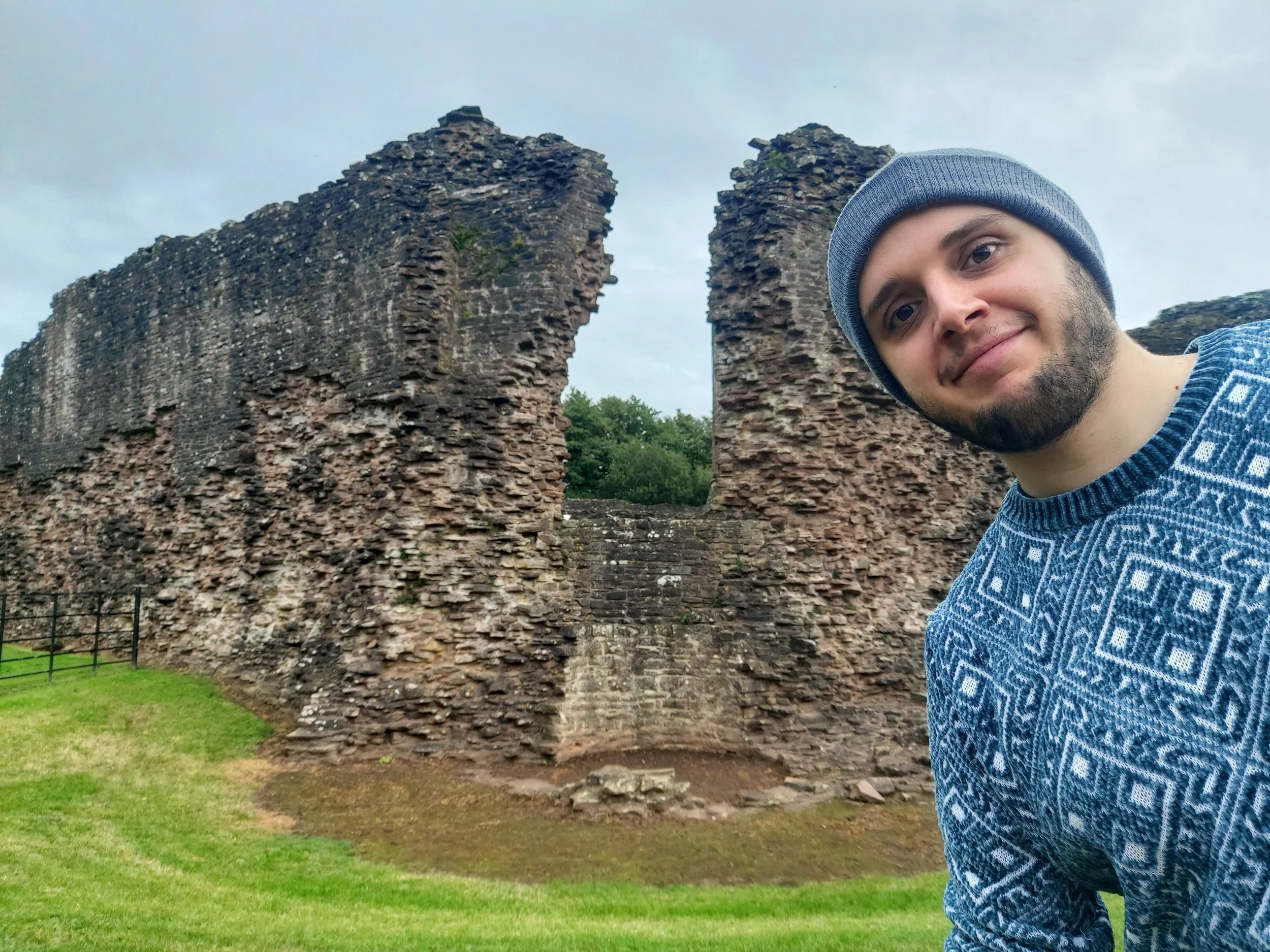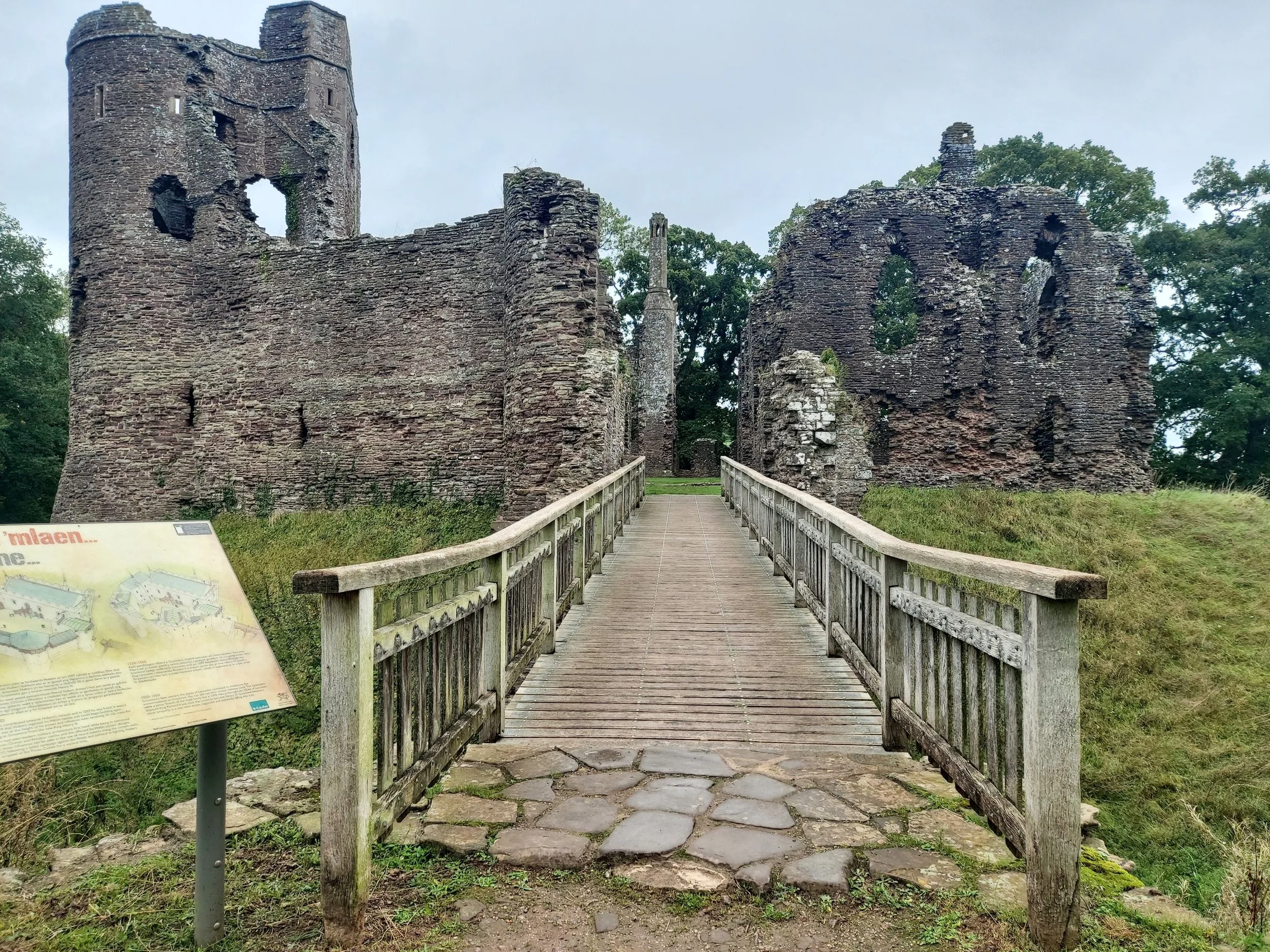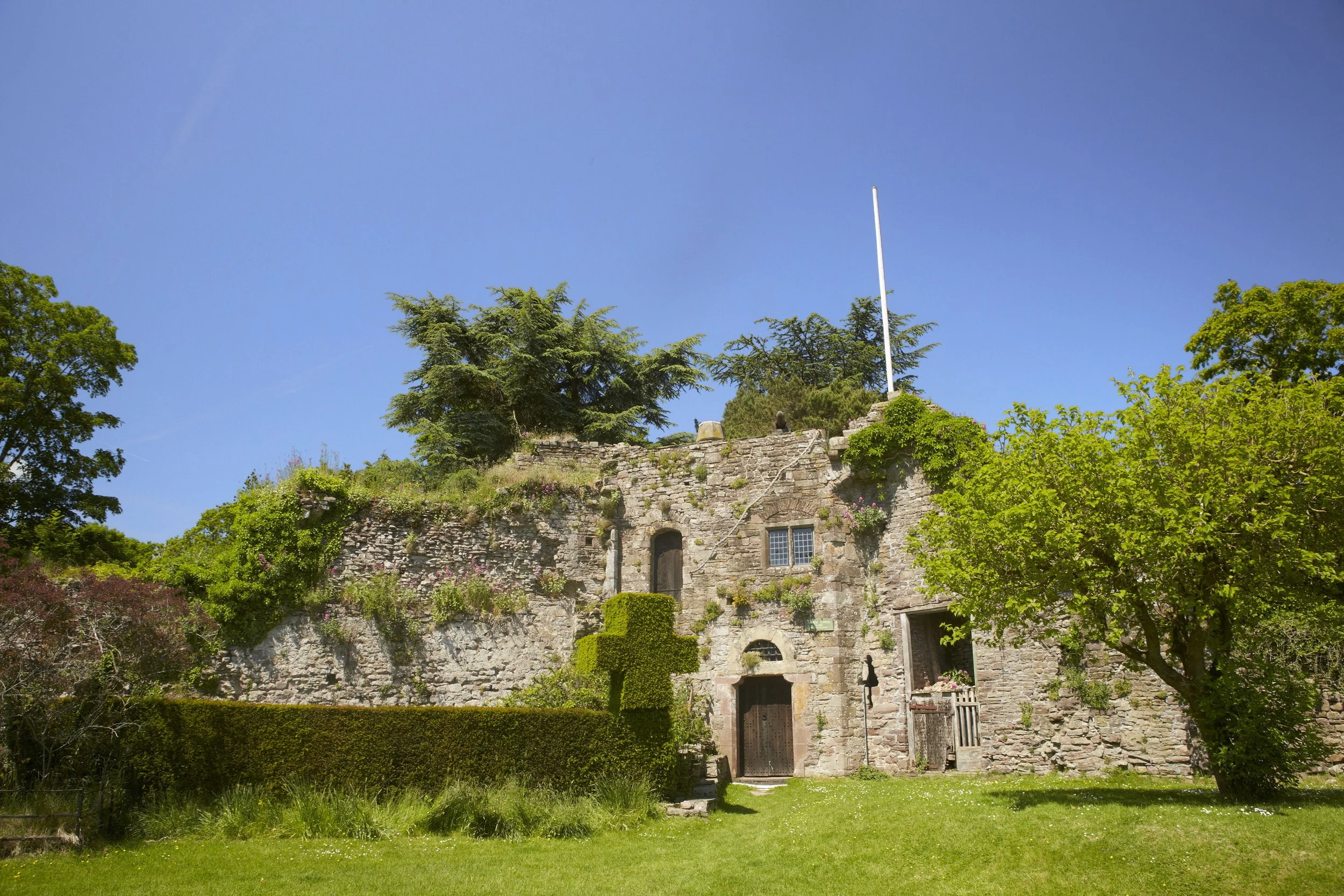Grosmont Castle | Visit Amazing Welsh Castles
Grosmont Castle is a Norman stone fortress located in Monmouthshire, South Wales. It stands above the River Monnow, near the English border, and forms part of a trio of castles known as the "Three Castles" alongside Skenfrith and White Castle.
These castles were built to secure Norman control over the Welsh Marches during the 11th and 12th centuries.
Today, the castle is a ruin managed by Cadw. Visitors can explore its remains free of charge. Its preserved gatehouse, hall block, and round towers offer a clear view of medieval defensive architecture.
Quick Facts
Location: Grosmont, Monmouthshire, South Wales
Type: Norman stone castle
Founded: Late 11th century
Built by: Likely William fitz Osbern, Earl of Hereford
Materials: Old Red Sandstone
Condition: Ruined, but substantial sections survive
Ownership: Cadw (Welsh Government’s historic environment service)
Access: Free to visit, open year-round
Significance: One of the “Three Castles” built to control the Welsh border
Brief History
It was established shortly after the Norman Conquest, likely around the 1070s. William fitz Osbern, a key supporter of William the Conqueror, is thought to have built the original timber structure. The castle was one of three fortifications forming a defensive triangle to control the Monnow Valley. These later became known as the Three Castles: Grosmont, Skenfrith, and White Castle.
By the early 13th century, Grosmont had been rebuilt in stone. Hubert de Burgh, Justiciar of England, carried out extensive work between 1219 and 1232. He added a large hall block and began the transformation of the site into a fortified manor. In the late 13th century, the castle passed to Edmund, Earl of Lancaster. His son, Henry of Grosmont, was born at the castle and became one of Edward III’s most trusted commanders.
Grosmont saw conflict during the uprising of Owain Glyndŵr in the early 15th century. In 1405, a battle near the castle resulted in a major English victory under Prince Henry, the future Henry V. After this, the castle gradually fell into decline and was abandoned by the 16th century.
Features and Layout
The castle was built on a triangular plan with rounded corners, typical of early stone castles. It occupies a raised site overlooking the River Monnow.
The main entrance is through a well-preserved twin-towered gatehouse on the east side. This structure still shows signs of its original portcullis slot and defensive loops. Beyond the gatehouse lies the inner ward, which housed key residential and administrative buildings.
The most striking surviving feature is the great hall block on the north side, added by Hubert de Burgh in the early 13th century. This two-storey building included a large hall on the upper level and service rooms below. Remnants of large windows and fireplaces can still be seen.
A circular mural tower at the south-west corner and a D-shaped tower on the south-east provided strong flanking defences. The castle walls are built from local Old Red Sandstone, giving them a reddish colour.
One detail often noted by visitors is the weathered stone steps leading to the hall, showing centuries of use.
Did You Know?
The name “Grosmont” comes from Norman French and means “Big Hill”.
Images





Legends and Stories
The castle has fewer surviving legends than more famous Welsh sites, but it holds some notable historical associations passed down locally.
One commonly shared story is the birth of Henry of Grosmont at the castle around 1310. He later became the 1st Duke of Lancaster and one of Edward III’s closest allies. Locals have long referred to him as “the great man of Grosmont”, and his military success is sometimes linked to his birthplace in regional lore.
Another event often recounted is the Battle of Grosmont in 1405. According to contemporary sources and reinforced by local tradition, Prince Henry (later Henry V) led an English force that killed or captured 800 of Owain Glyndŵr’s troops. Accounts of the event appear in historical retellings and are sometimes mentioned by local guides, such as those cited in Monmouthshire tourist brochures and review sites like TripAdvisor.
While there are no major ghost stories or mythical sightings tied to the castle, its long association with noble families and military history continues to generate local pride and storytelling.
Visiting
Opening times & entry
Open daily, 1 April–31 March, from 10 am to 4 pm.
Last admission is at 3.30 pm.
Closed on 24–26 December and 1 January.
Entry is free; no ticket required.
Directions
Grosmont Castle sits in the village of Grosmont, Monmouthshire, off the B4347, northeast of Monmouth. The site overlooks the River Monnow. Parking is available nearby in the village. GPS coordinates: Latitude 51.915278 N, Longitude −2.865833 W.
Facilities
Level‑2 easy terrain throughout.
Dogs on short leads welcome on ground-floor areas.
No smoking allowed.
No amenities like toilets or cafés on-site, nearest facilities are in the village.
Accessibility & restrictions
Some upper levels may not accommodate dogs; only ground-floor access is allowed.
The terrain is gentle but includes uneven ancient stone and weathered steps, take care.
Visitor experience
You can explore the gatehouse, inner ward, hall block, and circular towers at your own pace. The stone steps leading to the hall remain visibly worn, a reminder of centuries of use. No staff or admission desk is present; access is simply by walking in during opening hours.
Nearby Attractions
The castle lies in a historically rich area with several other medieval sites and scenic walking routes nearby.
Skenfrith Castle
Another of the “Three Castles”, it features a large circular keep and riverside setting. Also free to visit.
White Castle
The third of the Three Castles. It has a large moat and impressive curtain walls.
Abergavenny Museum and Castle
Offers exhibits on local history and panoramic views of the Usk Valley.
Offa’s Dyke Path
This national trail runs near Grosmont and offers scenic walks along the Welsh–English border.
St Nicholas Church, Grosmont
A Grade I listed parish church dating from the 13th century, located a short walk from the castle.
Visitor Tips
Dogs are allowed on short leads but only on the ground-floor areas
Free village parking available a short walk from the site
No toilets, shops, or cafés on-site, plan ahead
Wear sturdy shoes due to uneven stone surfaces
Bring a camera, clear views of the hall and gatehouse remain
Best time to visit is morning or late afternoon to avoid busier midday hours
Combine with White Castle and Skenfrith Castle for a full-day “Three Castles” tour
In winter, parts of the site may be slippery or closed due to frost
FAQs
-
Entry is free all year round. No ticket or booking is required.
-
The site has uneven stone surfaces and steps, which may limit access. The outer grounds are more accessible than the inner ward.
-
Yes. Dogs on short leads are allowed in the ground-floor areas. Upper levels are restricted.
-
The castle is located in the village of Grosmont, Monmouthshire. It’s accessible by car via the A465 and local B-roads. Parking is available in the village.
-
No formal tours are offered, but interpretation panels are available onsite.
Wrapping it Up
This castle offers a clear view into medieval Norman military architecture. Its well-preserved gatehouse, large hall block, and riverside setting reflect its role as both a stronghold and residence. Though now a ruin, the castle remains a key part of the Three Castles network and a significant historical site in the Welsh Marches. With free entry and year-round access, it provides an informative visit for anyone interested in medieval history.
Sources
Wikipedia
Historical details, construction timeline, events like the siege during the Glyndŵr Rising, Grade I listing, and management by Cadw.
https://en.wikipedia.org/wiki/Grosmont_Castle
Cadw official site
Opening times, free entry, visitor rules (dogs, terrain, seasonal closures).
https://cadw.gov.wales/visit/places-to-visit/grosmont-castle
Gatehouse Record
Grid reference, site description, and context within the “castle trio” of the Marches.
https://www.gatehouse-gazetteer.info/Welshsites/566.html
VisitWales
Coordinates in decimal format, visitor facilities.
https://www.visitwales.com/attraction/castle/grosmont-castle-cadw-1231742




Cardiff Castle is a medieval and Victorian-era site in the centre of Cardiff, the capital of Wales.